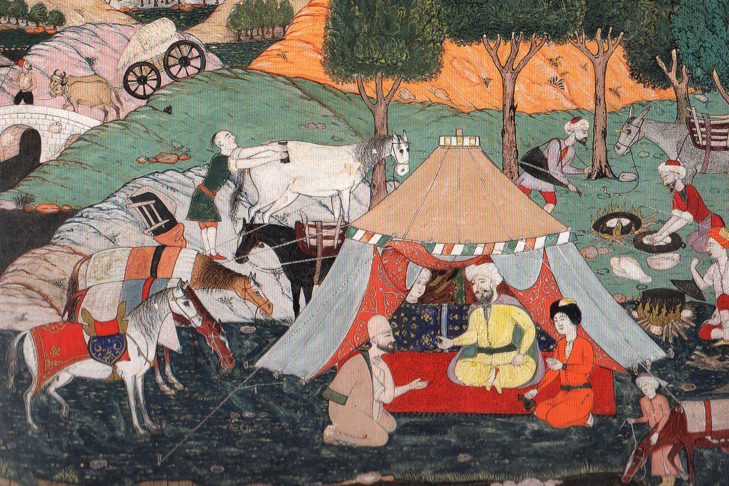About Evliya Çelebi (1611-c.1685)
The Evliya Çelebi Way retraces the initial stages of the journey of the singular Ottoman gentleman Evliya Çelebi as he travelled to perform the pilgrimage to the Islamic Holy Places in the Hejaz in 1671.
Son of the imperial goldsmith and a slave-girl of Abkhazian origin, Evliya Çelebi received early training in the essentials of the Muslim faith, and was then educated at the Palace School of Sultan Murad IV from where he graduated as a cavalryman. This environment clearly nurtured his talents as an entertainer, most notably in music and story-telling, and fostered the restless curiosity that prompted his desire to travel throughout the empire and beyond—and to compile an account of the knowledge he gained. Evliya Çelebi states that he had a wide circle of friends. His capacity for camaraderie shines through his Seyahatname, or Book of Travels, and he was able to undertake his journeys thanks to the wide circle of well-placed individuals—many of them his kinsmen—with whom he often travelled as they progressed across the sultan’s realms. He was present at a number of military engagements, and although not a state official, he fulfilled a variety of semi-official functions including membership of an Ottoman embassy to Vienna in 1665, and negotiator with the Safavid governor of Tabriz in 1647 and 1655.
Seyahatname, or Book of Travels
Evliya Çelebi’s Book of Travels is a first-person, ten-volume narrative of his journeys over some forty years, from the Aegean to the Sea of Azov, from the northern Black Sea steppe to the upper Nile. The author passed through Anatolia on each occasion that histravels took him eastwards, and his Anatolian travels are recorded in five of the ten volumes of his great work. The Book of Travels is a unique geographical, social, cultural and linguistic record of the places and peoples the author encountered, and an invaluable source for many aspects of life in his time.
The manuscripts of Evliya Çelebi’s travelogue have recently been made available in the modern Turkish alphabet, in a scholarly transcription of the original Ottoman. This brings them to the attention of a wider audience than hitherto. Some excerpts from the Book of Travels are available in English, French or German in modern studies, and the earliest section, about Istanbul, was famously published in English by Joseph von Hammer-Purgstall in two volumes in 1834-50.
An Ottoman Traveller: Selections from the Book of Travels of Evliya Çelebi, trans: Robert Dankoff and Sooyong Kim (London: Eland, 2011)
In March 2011, Google created the following logo for Evliya’s 400th birthday:

